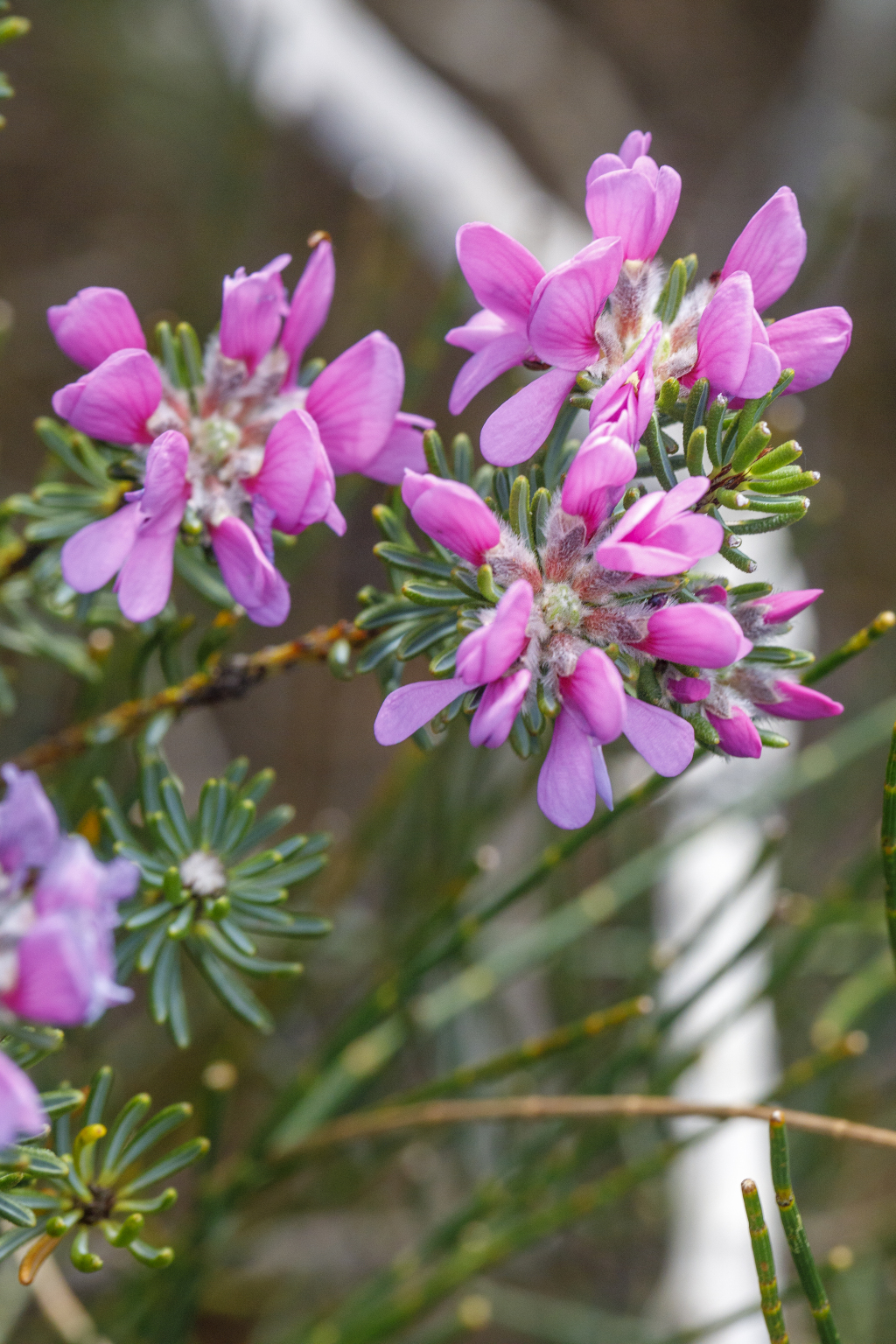Pultenaea
Shrubs, prostrate to tall and erect. Leaves simple, usually alternate, rarely opposite or in whorls of 3; margins entire; stipules scarious, usually fused behind the petiole for part of their length. Flowers axillary, often in a condensed terminal raceme or head, orange or yellow with red markings, rarely pink or apricot; bracts, if present, caducous or persistent, often replaced by the enlarged stipules of floral leaves; bracteoles simple or stipulate, attached to the calyx tube or, rarely, to the pedicel immediately below the calyx; standard equal to or slightly longer than the lower petals; stamens free, equal in length; ovary pubescent to glabrous or glabrous except for a tuft of hairs at the summit, ovules 2, rarely 4. Pod ± ovate, flat or turgid, hairy or glabrous; seeds with intricately divided aril.
126 species, all endemic to Australia.
Corrick, M.G. (1996). Pultenaea. In: Walsh, N.G.; Entwisle, T.J., Flora of Victoria Vol. 3, Dicotyledons Winteraceae to Myrtaceae, pp. 765–793. Inkata Press, Melbourne.
 Spinning
Spinning


